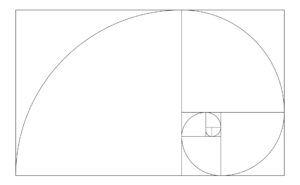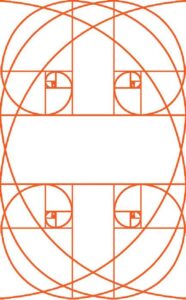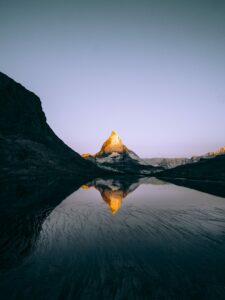From YouTube and Instagram to TikTok and Facebook, all of the most-used social media platforms are changing their strategies and infrastructure to support vertical video. It’s no surprise to anyone, as our feeds are becoming increasingly filled with vertical-oriented visuals. It’s the most natural way to hold a phone and consume video content.
Another word to use for this orientation is portrait orientation or portrait mode. So, as we continue this shift to an emphasis on vertical and portrait mode, how do we frame and compose our shots for a pleasing image? 
The rules of composition still apply in portrait mode. First, let’s look at the key differences between vertical and horizontal, or portrait and landscape orientation. Then, we will apply two well-known composition rules in photography: the Rule of Thirds and the Golden Ratio.
Landscape orientation 
The landscape format provides more space on the sides of an image. The elements within a landscape-oriented perspective are typically wider than they are taller. This is ideal for landscape or architecture photography or videography.
In landscape photography, your eyes typically explore elements from one side to another. A powerful landscape-oriented image encourages the viewer’s eyes to travel throughout the frame, soaking in various details to craft a story. Think big and expansive when shooting in landscape.
Finally, oftentimes landscape images follow horizontal lines or objects moving horizontally. For example, in street photography, pedestrians and cars move through space horizontally. This is something else to keep in mind.
Portrait orientation
Conversely, portrait photos and vertical videos are taller than they are wide. Elements in this orientation are typically narrower and taller. From tall towers to people themselves, the eye travels up and down or simply focuses on one subject. There is little to no distraction on the sides. 
Shooting in portrait mode is ideal if the surrounding elements distract, rather than support, from the story, message, or subject. Animals, people, food, towers, and plants are good examples of subjects for vertical orientation. These perspectives are intimate, rather than expansive.
Vertical video in social media is on the rise and an area for emphasis for many brands. With these differences in mind, let’s explore how to work with subjects and apply existing composition rules to vertical video strategy.
Rule of Thirds
Many photographers are familiar with the rule of thirds. This rule suggests dividing the image into thirds and placing your subject into one of those thirds or intersections. There are two horizontal and two vertical lines, making nine equal parts with four intersecting points. 
For vertical videos and portraits, place the eye of the subject in one of these intersections. Many vertical videos are people-centric nowadays, with the amplitude of influencers and user-generated content. Fill the frame with someone and allow their eye to fall near one of the top intersection points. Eyes grab attention; place them well. 
If you’re working with landscapes or footage without a person, try to add interest to your image by filling each third with something unique. Secondly, vertical-oriented compositions naturally emphasize vertical lines. Trees, plants, and other things in nature work well for these compositions. 

Golden Ratio
The golden spiral is a compositional tool that takes a little more getting used to than the rule-of-thirds. It is also known as the Fibonacci spiral or golden ratio. It’s a formula, one that’s hard to remember. The mathematical equation is A ÷ B = (A + B) ÷ A = 1.61803398875. Expressed as a ratio, it is 1:1.618. 
The golden ratio makes the phi grid, which looks a bit different than the grid from the rule of thirds. The center intersecting lines are closer together, making the middle row and middle column smaller. This grid is made up of “golden rectangles” using the golden ratio. Simply put, the golden spiral can be drawn from a golden rectangle whose sides are proportioned, formed by the golden ratio.
This spiral is seen everywhere in nature, from honey combs, flowers, to hurricanes and pine cones. It can be applied in eight different ways: four in horizontal, four in vertical. Try to place the subject with the most details in the smallest box of the coil or spiral. The goal is to have your viewers’ eye travel through the image following this spiral. 
Rules are meant to be broken
Of course, rules don’t always hold true in every circumstance. For example, you may want to center a person or subject if it creates harmony in another way. For instance, if you’re working with a reflection, pattern, or number of subjects that, when dividing the image equally in half, it creates symmetry.
The main thing is, it’s important to learn the rules first, before you decide to break them. Finally, don’t overthink it, especially on social media. If you’re capturing emotion or key moments filled with energy that fills the frame, or perspective, you won’t have any problem grabbing someone’s attention. 